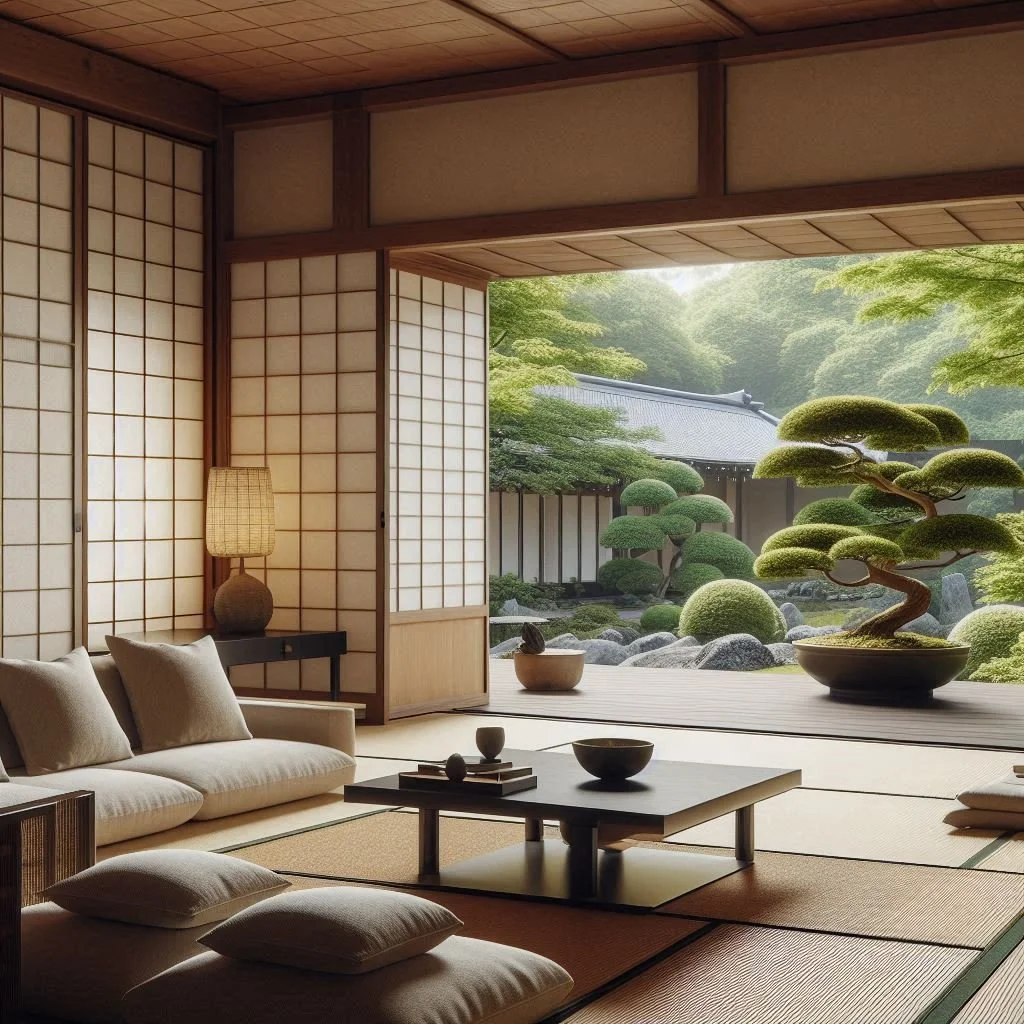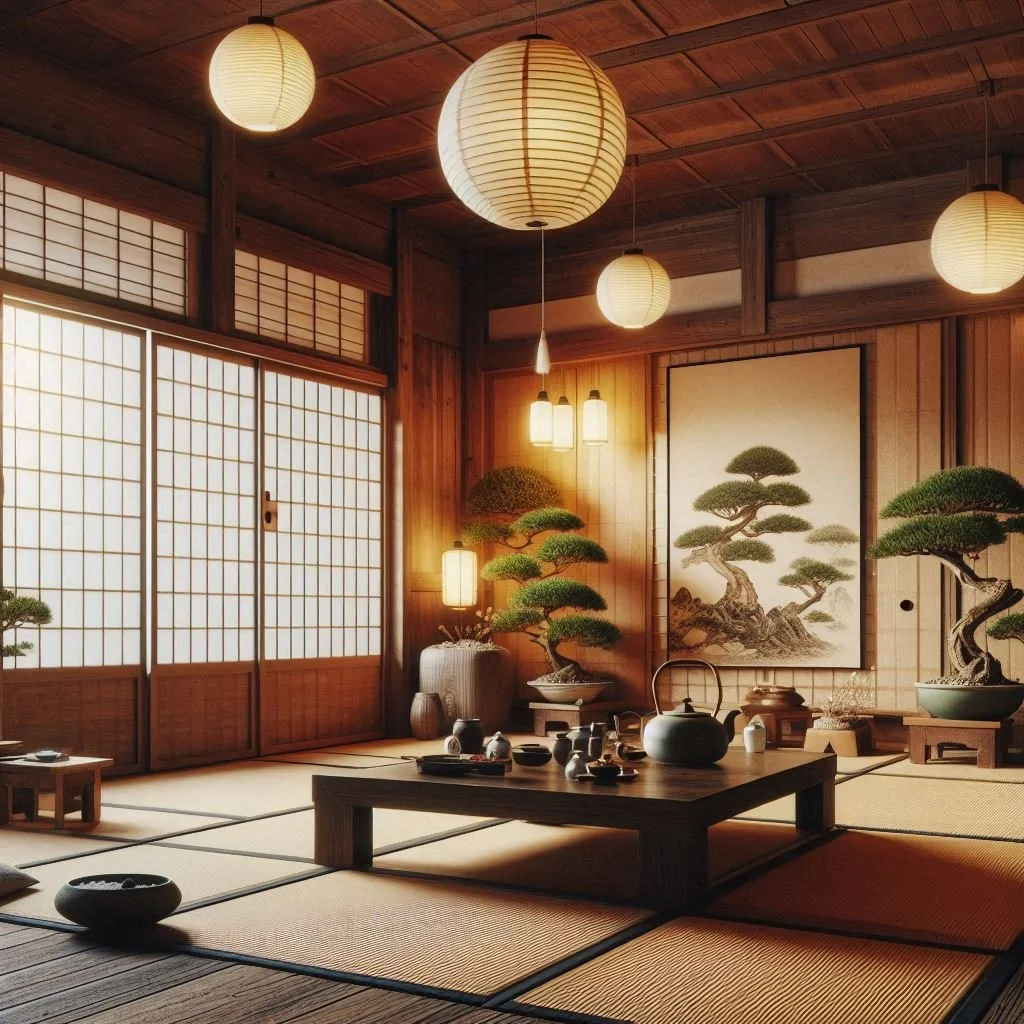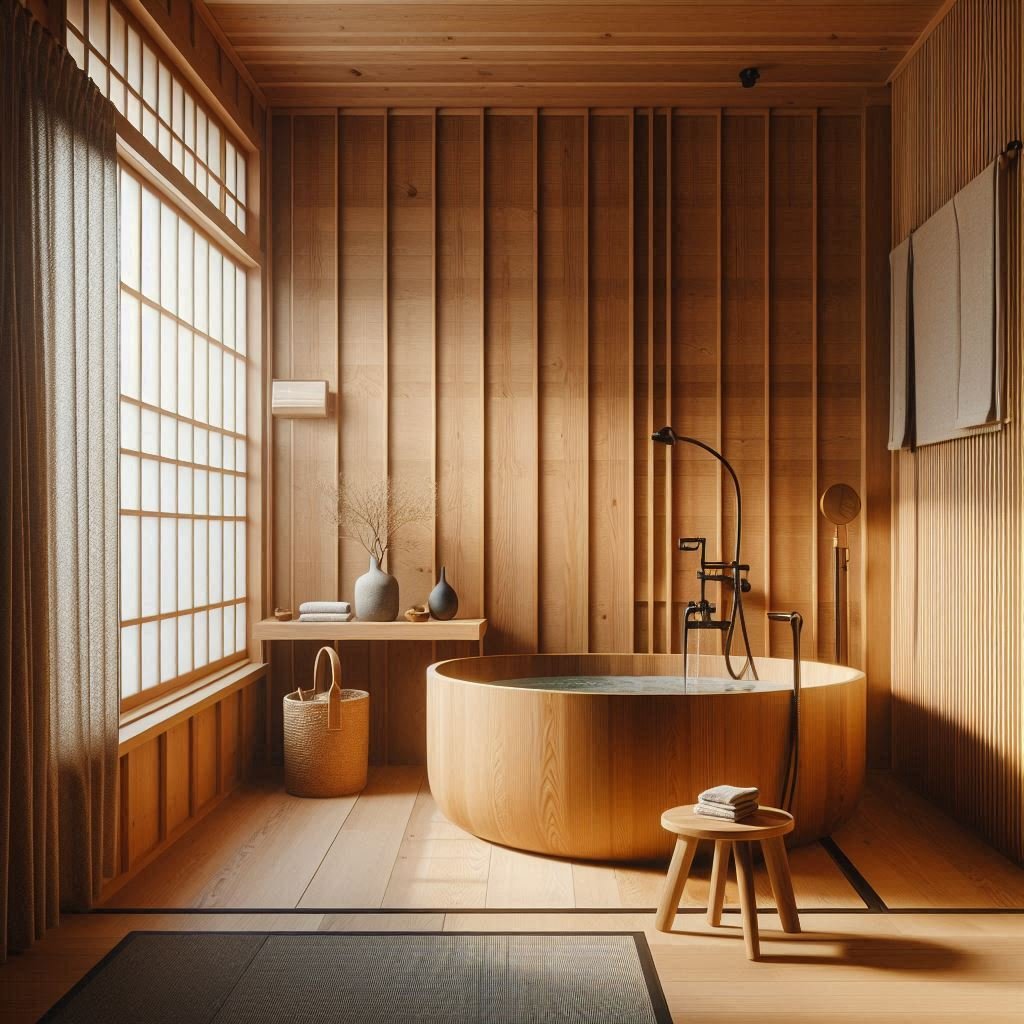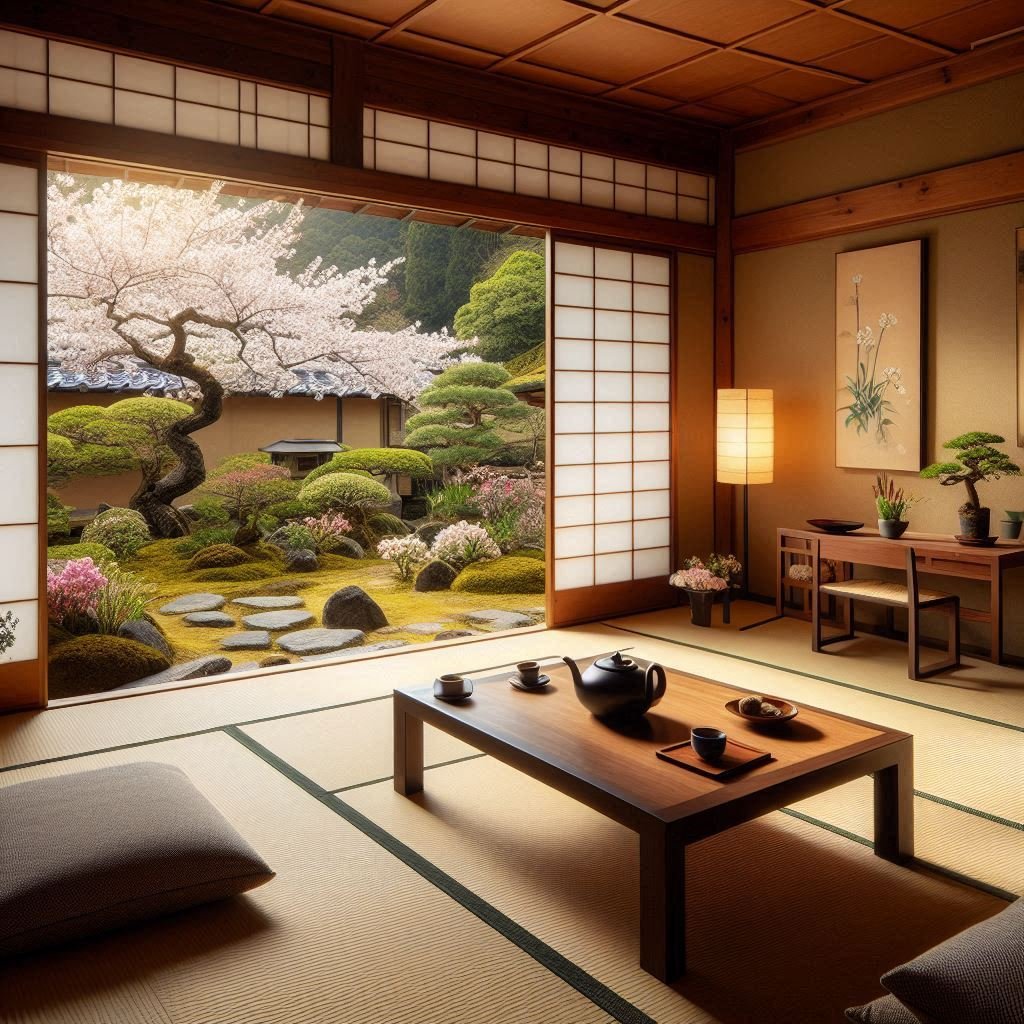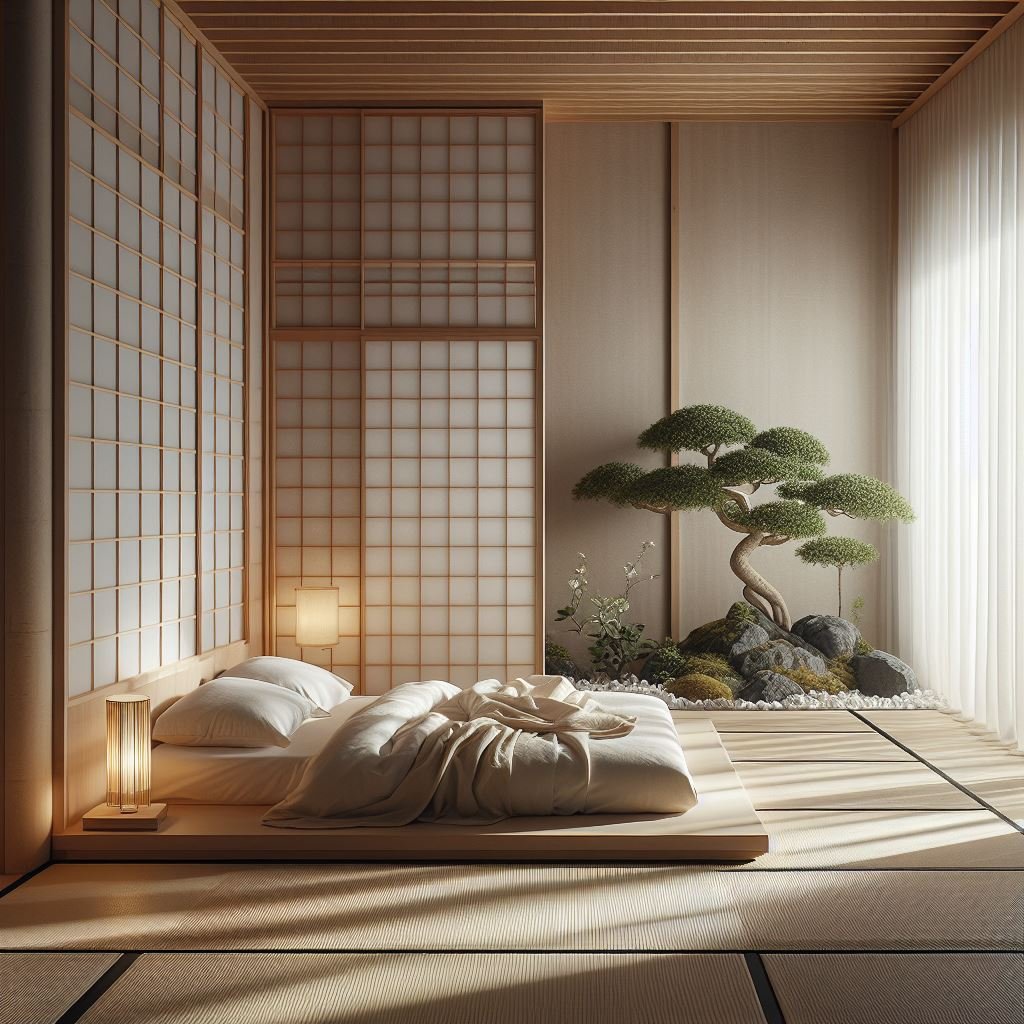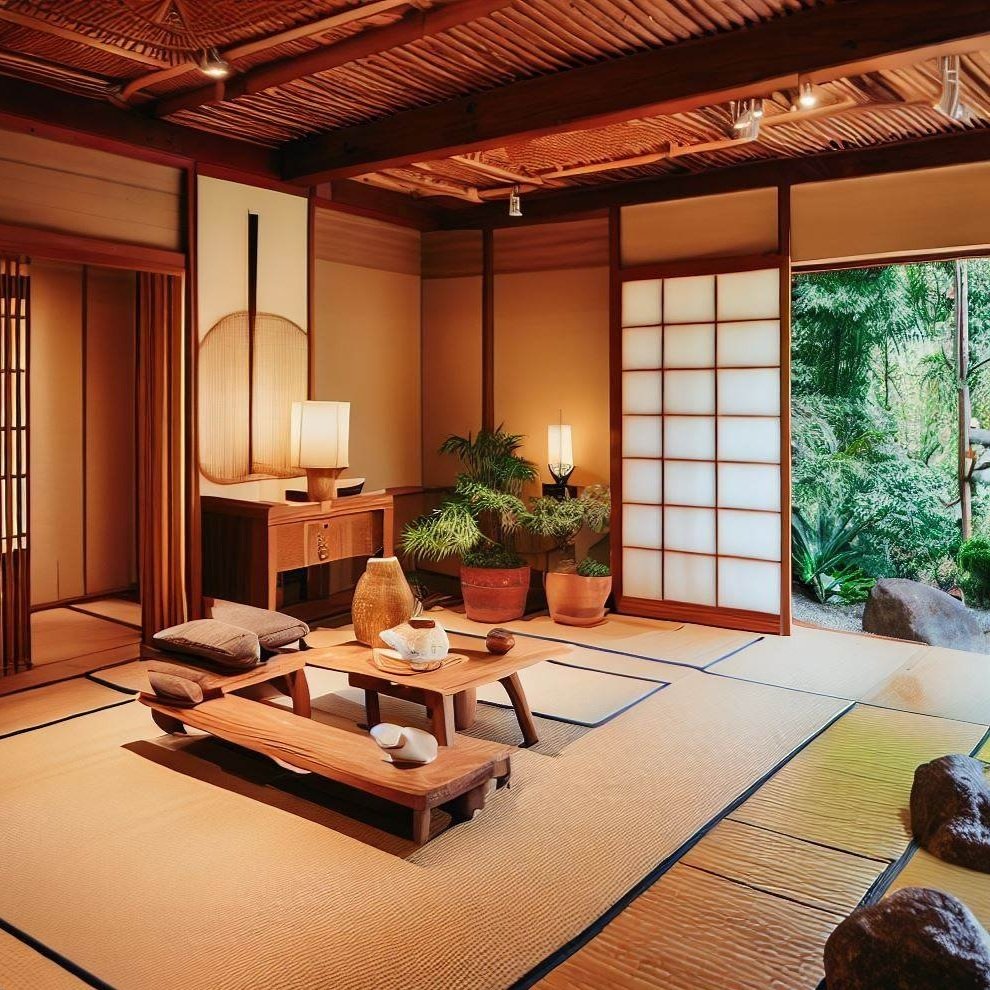15 Modern Japanese House Ideas for Elegant Living
Discover 15 modern Japanese house ideas that blend simplicity with elegance. Explore design tips to create a tranquil and sophisticated living space inspired by Japanese aesthetics.
Modern Japanese homes seamlessly combine minimalism with natural beauty, creating an environment where simplicity meets elegance. The concept revolves around harmony—balancing the use of space, light, and materials to cultivate tranquility. Whether you aim to redesign your entire home or incorporate Japanese-inspired elements into your decor, this design approach offers a peaceful yet stylish way to live.
This article explores 15 modern Japanese house ideas to inspire you. From the use of natural materials to creating open layouts that invite light, each idea reflects the unique aesthetics of Japanese culture. These ideas focus on thoughtful design, where every element serves a purpose. Ready to introduce a little zen into your life? Let’s dive in.
1. Incorporate Tatami Mats for Traditional Charm
Tatami mats, traditional woven straw mats used in Japanese homes, bring both authenticity and comfort to your space. Incorporating them into your design introduces natural texture and a soothing, earthy aroma that enhances relaxation. Use tatami mats as flooring in select rooms to create a serene, minimalist atmosphere, or design a dedicated tatami corner for meditation and quiet reflection. Their soft, natural fibers offer a comfortable surface, making them ideal for spaces intended for rest or mindfulness practices. Beyond their functionality, tatami mats add a subtle yet distinct aesthetic, reflecting the simplicity and elegance of Japanese interiors. Pair them with low furniture or floor cushions to maintain an authentic look while blending seamlessly with modern decor. Whether used throughout a room or in a small meditation nook, tatami mats bring warmth and tranquility, transforming your space into a calming retreat.
2. Use Sliding Shoji Doors for Flexibility
Shoji doors, crafted from translucent paper and wooden frames, are a defining feature of traditional Japanese homes. These elegant sliding doors offer versatility, allowing you to open or close off spaces as needed, making them ideal for flexible living arrangements. Their lightweight design facilitates the natural flow of light and air, creating a bright, airy atmosphere that promotes tranquility. Shoji doors are not only functional but also aesthetically pleasing, adding a touch of simplicity and grace to any room. They blend seamlessly with minimalist interiors, maintaining a clean, uncluttered look while offering privacy when desired. Use them to divide larger spaces or as closet doors to introduce an authentic Japanese element to your home. Their ability to soften light and create a calming ambiance makes shoji doors a beautiful addition, enhancing both the style and functionality of modern and traditional spaces alike.
3. Opt for Low Furniture for a Grounded Feel
Low-profile furniture, like floor cushions and short-legged tables, fosters a sense of groundedness, aligning with the Japanese philosophy of connecting with the earth. Incorporating these elements creates a calm, inviting atmosphere that encourages relaxation and mindfulness. A low table paired with comfortable floor cushions offers an intimate setting for meals, tea, or conversation, while a futon sofa provides versatile seating that can adapt to lounging or sleeping. This design approach emphasizes simplicity, promoting a slower, more intentional way of living. The absence of elevated furniture allows for a natural flow of energy, making the space feel open and uncluttered. Whether used in a dining area or a living space, low-profile furniture encourages you to sit closer to the floor, fostering comfort and reflection. This thoughtful arrangement blends functionality with tranquility, transforming your home into a soothing retreat that reflects the essence of Japanese-inspired design.
4. Create a Zen Garden for Outdoor Serenity
A Zen garden is a peaceful way to bring Japanese design principles into your outdoor space. Incorporating elements like gravel, stones, and carefully placed plants creates a minimalist landscape that embodies simplicity and balance. Raked gravel patterns represent water, while stones symbolize mountains or islands, inviting reflection and mindfulness. Adding a small water feature, such as a fountain or bamboo spout, enhances the garden’s soothing atmosphere with the soft sound of flowing water. A bamboo fence or screen can provide privacy while reinforcing the natural aesthetic. The thoughtful arrangement of each element encourages a sense of calm and contemplation, making the garden an ideal place for relaxation. Whether used as a focal point or a quiet retreat, a Zen garden offers a tranquil escape, blending natural beauty with intentional design to create a harmonious outdoor sanctuary.
5. Maximize Natural Light with Large Windows
Natural light is a key element in modern Japanese design, enhancing the sense of openness and harmony with nature. Large windows allow sunlight to fill the space, creating a bright, inviting atmosphere while fostering a connection to the outdoors. Floor-to-ceiling windows or sliding glass doors are ideal choices, as they maximize light exposure and make interiors feel more expansive and airy. This design approach blurs the boundary between indoor and outdoor spaces, promoting a seamless flow of energy. Sunlight streaming through the windows not only illuminates the room but also highlights natural textures, such as wood or stone, adding warmth and depth. Whether in a living room, bedroom, or dining area, embracing natural light creates a serene environment that aligns with the principles of simplicity and mindfulness central to Japanese design. With thoughtful window placement, every space becomes a tranquil retreat bathed in light.
6. Incorporate Neutral Tones for a Calm Palette
Japanese interiors often feature a soft, neutral color palette, with shades like beige, white, and light gray forming the foundation. These gentle tones create a calming, balanced atmosphere that promotes relaxation and mindfulness. The subtle, understated hues prevent visual clutter, allowing the simplicity of the design to shine. To enhance the serene environment, introduce small accents of color through textiles, such as cushions, throws, or curtains, or with handcrafted pottery and ceramics. These delicate touches add character and warmth without disrupting the overall tranquility. Natural materials like wood, stone, and linen further complement the palette, reinforcing the connection to nature. This thoughtful combination of neutral tones and soft accents transforms interiors into peaceful spaces ideal for unwinding. By keeping the palette simple yet intentional, Japanese-inspired decor nurtures a sense of calm, allowing the mind and body to rest and recharge.
7. Use Natural Wood for Warmth and Texture
Natural wood brings warmth and texture to your home, creating a welcoming and organic atmosphere. Incorporating wood elements in flooring, furniture, and wall panels enhances the connection to nature that is central to Japanese design. Materials like Japanese cedar and bamboo are especially popular, valued for their durability and timeless aesthetic. These woods develop a rich patina over time, adding character as they age. Bamboo, with its light color and smooth texture, is ideal for furniture and accents, while cedar’s warm tones work beautifully for flooring or paneling. The natural grain and texture of wood introduce depth without overwhelming the space, fostering a sense of simplicity and calm. Whether used in subtle details or throughout a room, wood elements help balance the design, making the space feel both grounded and elegant. This integration of natural materials reflects the harmony and mindfulness inherent in Japanese-inspired interiors.
8. Design Open Layouts for a Sense of Space
Open floor plans are a defining feature of modern Japanese homes, promoting a sense of freedom, fluidity, and connection throughout the space. This layout approach allows natural light and air to flow easily, making even small rooms feel more expansive. Instead of relying on walls to divide areas, use furniture or Shoji screens to subtly define different zones while maintaining the overall openness. A low-profile sofa or bookshelf can mark the transition between a living area and dining space without disrupting the layout's harmony. Shoji screens offer flexibility, allowing you to open or close off spaces as needed, reinforcing the sense of lightness and adaptability. This design fosters a seamless connection between rooms, enhancing both functionality and aesthetics. By minimizing barriers, open floor plans create a tranquil, airy environment that reflects the simplicity and mindfulness at the heart of Japanese-inspired interiors.
9. Incorporate Indoor Plants for a Breath of Nature
Bringing greenery indoors helps connect your living space with nature, creating a sense of harmony and tranquility. Incorporate bonsai trees, ferns, or small potted plants throughout your home to introduce subtle bursts of life. These plants complement the clean lines and minimalist aesthetic of Japanese design, adding a refreshing, organic touch without overwhelming the decor. A carefully placed bonsai can serve as a living sculpture, while clusters of ferns or leafy plants add softness to shelves or corners. The simplicity of these natural elements balances with the understated palette often used in Japanese interiors, enhancing the sense of calm. Whether arranged in ceramic pots or bamboo planters, indoor greenery promotes mindfulness while purifying the air. This thoughtful integration of plants reflects the importance of nature in Japanese culture, helping to transform your home into a peaceful retreat that nurtures both the body and mind.
10. Add a Soaking Tub for a Relaxing Bathing Experience
A deep soaking tub, or ofuro, is a luxurious feature in Japanese homes, offering a space for relaxation and quiet meditation. Designed for more than just bathing, the ofuro transforms a simple bath into a soothing ritual, inviting you to unwind and recharge. These tubs are typically smaller but deeper than Western styles, allowing the water to cover the body fully while encouraging a state of calm. To enhance the spa-like atmosphere, surround the tub with natural materials such as stone, wood, or bamboo, which complement the serene ambiance. Wooden slats, river stones, or subtle greenery further elevate the experience, creating a harmonious connection between nature and design. The ofuro embodies the Japanese philosophy of mindfulness and balance, offering a retreat where the mind and body can relax. Integrating an ofuro into your home brings both beauty and tranquility, turning everyday moments into peaceful rituals.
11. Blend Modern and Traditional Elements Seamlessly
Modern Japanese homes seamlessly blend contemporary designs with traditional elements, creating spaces that feel both fresh and timeless. This thoughtful combination of old and new reflects the harmony central to Japanese aesthetics. Sleek, minimalist furniture pairs beautifully with tatami mats, adding warmth and texture while grounding the design in tradition. Similarly, metal fixtures, such as light fittings or hardware, complement the soft, organic feel of Shoji screens, introducing a dynamic contrast that enhances the room's character. The interplay of clean lines with natural textures fosters a balance between simplicity and elegance, promoting both functionality and beauty. This fusion allows modern Japanese interiors to remain rooted in cultural heritage while embracing contemporary living. Whether it’s a low-profile sofa framed by wooden accents or a modern dining table surrounded by floor cushions, this blend ensures the space feels inviting, thoughtful, and effortlessly harmonious.
12. Use Stone Accents for an Earthy Feel
Stone accents introduce an earthy, grounded quality to interiors, enhancing the connection to nature. Incorporate stone elements through tiles, pebble trays, or small indoor rock gardens to infuse natural texture into your space. Stone flooring near entryways offers both durability and elegance, creating a welcoming transition from the outdoors. Around soaking tubs, stone surfaces add authenticity and a spa-like feel, promoting relaxation. Pebble trays beneath planters or as decorative accents bring subtle, organic touches to shelves and corners. The natural patterns and textures of stone complement minimalist interiors, adding depth without overwhelming the design. Whether used as flooring, wall accents, or in decorative features, stone enhances the sense of calm and stability central to Japanese-inspired spaces. This timeless material helps create an environment that feels serene, authentic, and connected to the earth, enriching your home with both visual appeal and tranquility.
13. Incorporate Subtle Lighting to Create Ambience
Lighting in Japanese design emphasizes ambience, using soft, indirect illumination to create a warm and soothing atmosphere. Paper lanterns, wall sconces, and recessed fixtures are popular choices, casting gentle light that enhances relaxation without the harshness of direct glare. This approach transforms any space into a tranquil retreat, making it ideal for unwinding after a long day. Paper lanterns add a subtle, natural texture, while wall sconces offer soft, localized lighting perfect for reading or conversation. Recessed fixtures, tucked discreetly into ceilings or walls, provide even illumination without drawing attention to themselves, maintaining the room’s clean, minimalist aesthetic. Layering these various light sources creates a cozy, inviting environment that reflects the Japanese philosophy of simplicity and mindfulness. Thoughtfully placed lighting not only enhances functionality but also contributes to the serene, calming vibe essential to Japanese-inspired interiors.
14. Opt for Minimalist Decor with Purpose
In Japanese homes, every item serves a clear purpose, reflecting the philosophy of simplicity and intentional living. Embrace minimalism by decluttering and keeping only the belongings that add true value to your life. This thoughtful approach not only creates a more organized space but also promotes mindfulness, encouraging you to focus on what matters most. Removing unnecessary items reduces visual clutter, making your home feel peaceful, open, and balanced. Each carefully chosen piece contributes to the overall harmony, ensuring both functionality and beauty. Whether it's a handcrafted dish, a cozy floor cushion, or a treasured piece of decor, everything in the space serves a role, fostering a sense of order and calm. By surrounding yourself with meaningful, purposeful objects, you create an environment that nurtures both the mind and soul, transforming your home into a serene retreat rooted in intentional design.
15. Add a Tea Room for a Peaceful Ritual
A small tea room offers a dedicated space for relaxation and mindfulness, fostering a sense of calm in your daily life. Decorate it with traditional tatami mats, low tables, and handmade pottery to create an environment rooted in simplicity and intention. The minimalist design encourages a quiet, meditative atmosphere, perfect for unwinding or enjoying moments of reflection. Hosting a tea ceremony in this space transforms a simple act into a meaningful ritual, adding elegance and purpose to your routine. The tactile experience of holding handcrafted pottery and the gentle aroma of tea enhance the sensory connection to the present moment. Whether used for personal reflection or shared gatherings, a tea room embodies the values of mindfulness and hospitality. Its thoughtful arrangement not only creates a serene environment but also invites you to slow down, savor the experience, and find balance in the everyday.
Conclusion
Modern Japanese house design offers more than just aesthetic appeal—it’s a way of life. By blending minimalism with natural elements, you create a home that feels calm, elegant, and welcoming. Whether you introduce sliding Shoji doors, incorporate natural wood, or build a Zen garden, these ideas bring harmony to your space. With a little intention, you can create a home that nurtures both body and soul.
Read next: 15 Modern Japanese Home Ideas for a Minimalist Look
Frequently Asked Questions
1. What makes Japanese home design unique?
Japanese design emphasizes simplicity, natural materials, and harmony between indoor and outdoor spaces.
2. How do I add Japanese elements to my home?
Start with small touches like tatami mats, Shoji screens, or minimalist furniture, and build from there.
3. What colors are common in Japanese interiors?
Neutral tones like beige, white, and soft gray dominate, with subtle accents in earthy colors or soft greens.
4. Can I combine modern design with Japanese aesthetics?
Absolutely! Mixing modern furniture with traditional elements like Shoji doors creates a unique and balanced look.
5. How can I create a Zen atmosphere at home?
Focus on decluttering, using natural materials, and incorporating soft lighting to promote relaxation and tranquility.
Stay up to date with our latest ideas!
Exclusive deals just for our readers! Click below to unlock special offers and elevate your shopping experience!



















